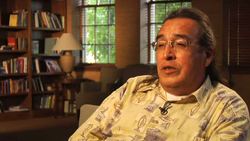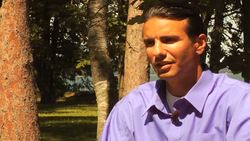International Relations
U.S.-Indian treaties are part of a long history of diplomacy among American Indians – a history that pre-dates the U.S. and continues to this day.
Over the course of centuries, Dakota and Ojibwe peoples negotiated agreements with one another and with other neighbors stretching from the east coast of North America to the Rocky Mountains. Shared use of resources, trade agreements, military alliances – American Indian diplomacy covered the full range of relationships among sovereign people, before the U.S. existed.
The U.S. first became a player in American Indian diplomacy not as a major political force but as provider of trade goods. Long into the treaty making era, Dakota and Ojibwe people used U.S. treaties to affect their positions among other American Indian peoples, as well as in relation to the increasingly powerful U.S.
American Indians continue to play a role in international diplomacy today, in government-to-government relations with other nations, and in efforts such as the development of the Declaration on the Rights of Indigenous Peoples.
Invitation to a Treaty
In the course of our descent to the Falls at St. Anthony, we observed another bark letter, as the party now began to call these inscriptions, suspended on a high pole, on an elevated bank of the river, on its west shore. At this spot, where we encamped for the night, and which is just opposite a point of highly crystalized hornblende rock, called the Peace Rock, rising up through the prairie, there were left standing the poles or skeletons of a great number of Sioux lodges. It is near and a little west of the territorial boundary of the Sioux nation; and on inspecting this scroll of bark, we found it had reference to a negotiation for bringing about a permanent peace between the Sioux and Chippewas. A large party of the former, from St. Peter's, headed by their chief, had proceeded thus far, in the hope of meeting the Chippewa hunters, on their summer hunt. They had been countenanced, or directed in this step, by Col. Leavenworth, the commanding officer of the new post, just then about to be erected. The inscription, which was read off at once, by the Chippewa Chief Babesacundabee, who was with us, told all this; it gave the name of the Chief who had led the party, and the number of his followers, and gave that chief the first assurance he had, that his mission for the same purpose, would be favourably received.
Pictograph Inviting Ojibwe to Treaty with Dakota, 1820
After our arrival at St. Anthony's Falls, it was found that this system of picture writing was as familiar to the Dacotah, as we had found it among the Algonquin race.—Described by Henry Schoolcraft, 1820






